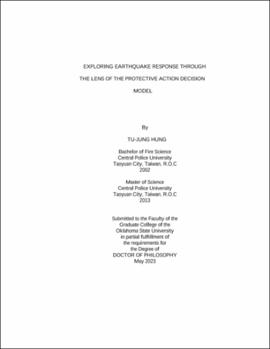| dc.description.abstract | Since the publication of the first version of PADM in 2004, scholars have been trying to understand the influential factors that impact people's response to disasters by testing the model. The third version of PADM, which includes social and environmental contexts, suggests that geolocation, physical, and social contexts influence people's disaster response. However, the ways in which these factors influence disaster response have not been fully explored, and PADM studies have yielded inconclusive results. Therefore, two overarching research questions were proposed to address this literature gap: Do people's disaster responses differ geographically during an earthquake? Why do people respond to earthquakes in specific ways in different geographical areas? To address these overarching research questions, household survey and interview data were collected after the 2018 Hualien earthquake in Taiwan. The Getis-Ord Gi* method was used to answer the first overarching research question. The findings suggest that geographical location, one of the environmental context factors, affects people's disaster responses (affective risk perception, cognitive risk perception, and protective action decision). The emotion of fear and nervousness, the perception of household losses, and the physical reaction of freeze and flight are clustered in some communities during the earthquake. Next, in-depth interviews were conducted among these communities to explore the possible root causes of the clusters and address the second overarching research question. Thematic analysis shows that environmental contexts, social contexts, optimistic bias, earthquake experiences, responsibility belief, hazard adjustment efforts, earthquake education, environmental cues, and cognitive risk perceptions resulted in these clusters. Based on the findings, this dissertation proposes an earthquake-oriented PADM to explain the unique nature of seismic hazards, which differ from other environmental threats in their quick onset, uncertainty in terms of location, timing, and magnitude, and geographical differences. This study offers emergency managers an opportunity to gain insight into people's earthquake responses. The findings can be utilized by emergency management professionals to help mitigate earthquake risks and promote appropriate protective actions to prevent injuries and fatalities during earthquakes. | |
